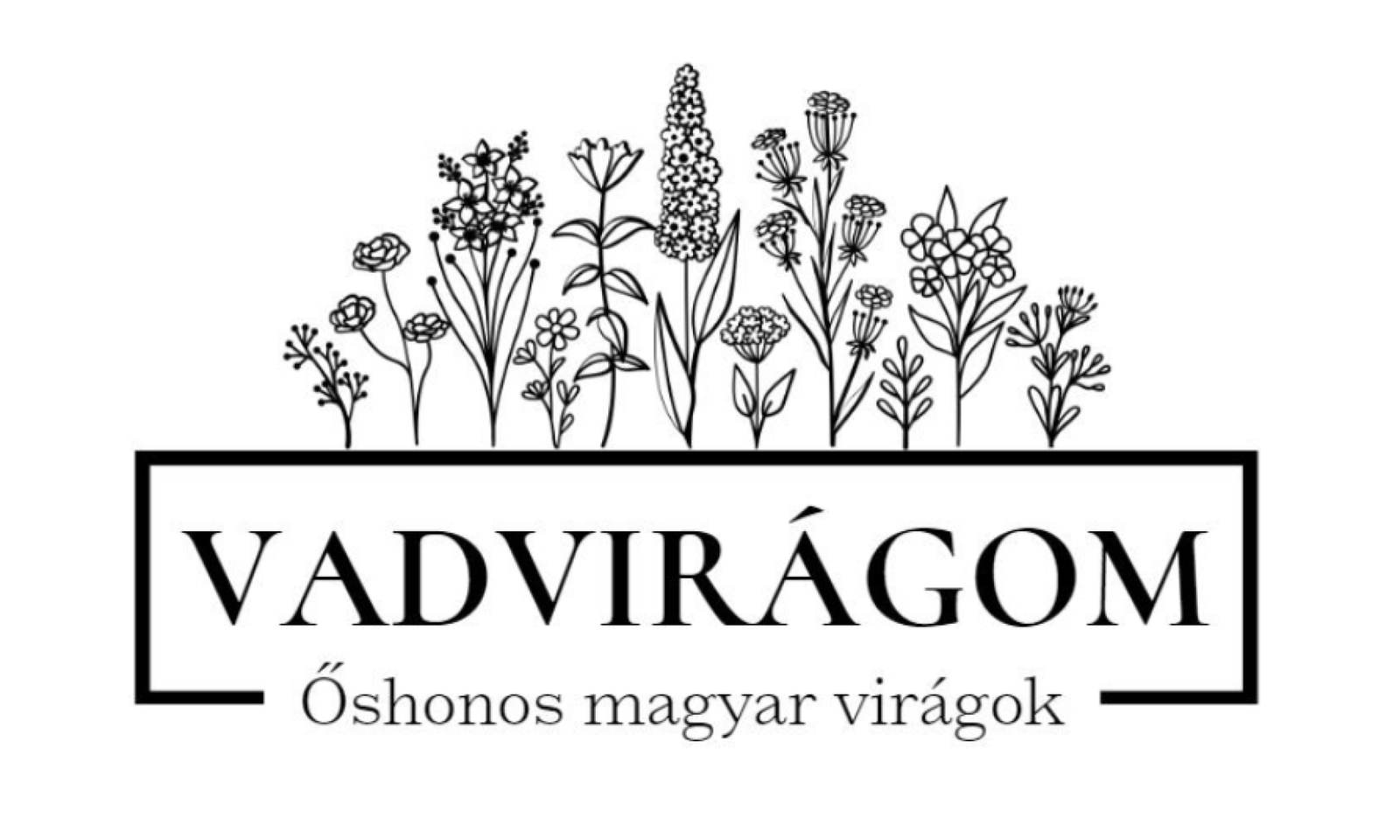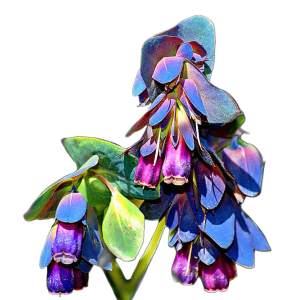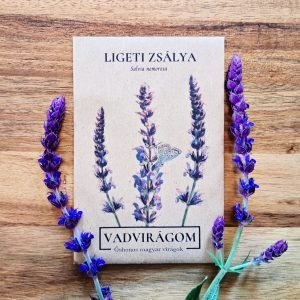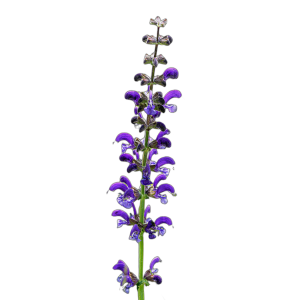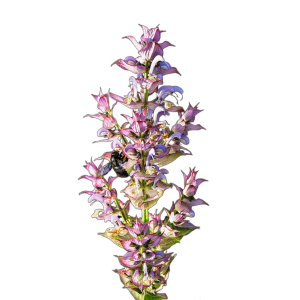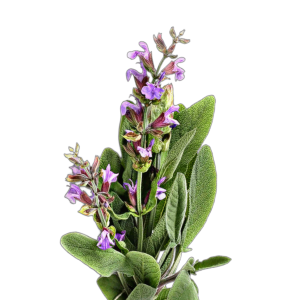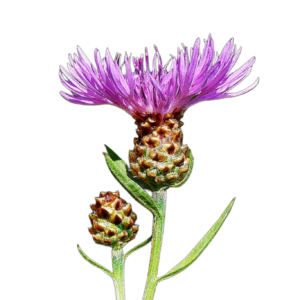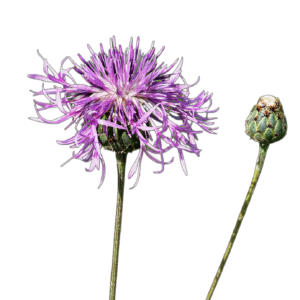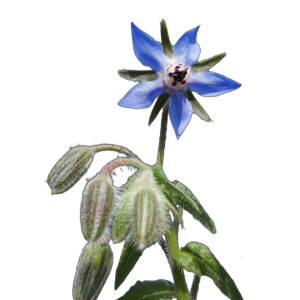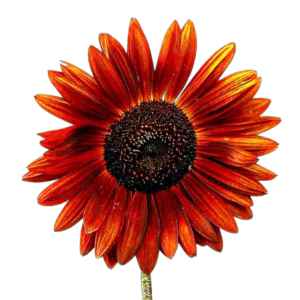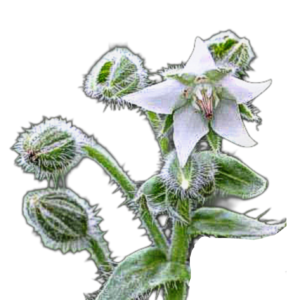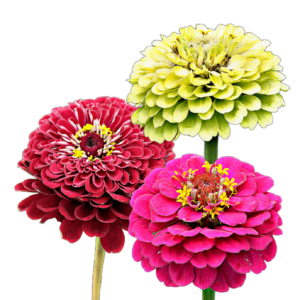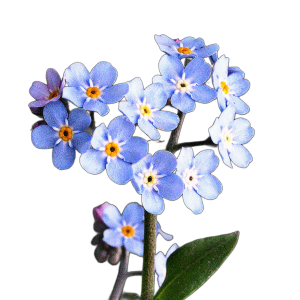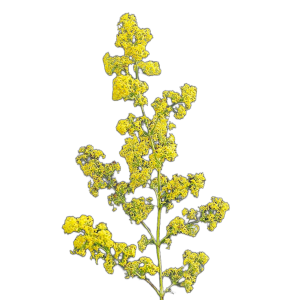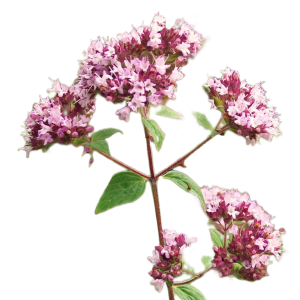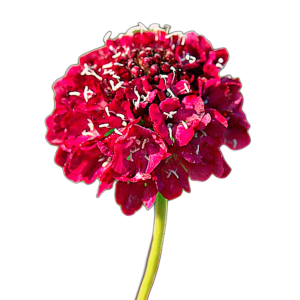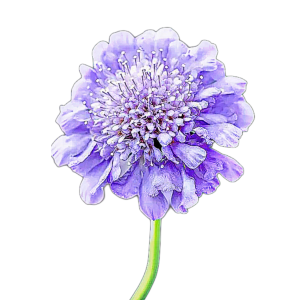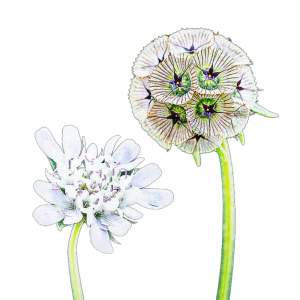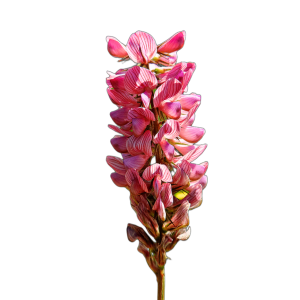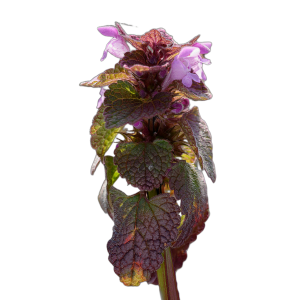Continue shopping "Cretan Snake Siskin (Echium creticum) 2g, ~650 seeds" has been added to your cart. View cart
-
-
Add to basket
- Add to wishlistAdd to wishlist
- 10/10 pollinator factor, also for window box, annual, bee-feeder
Lily of the valley (Cerinthe major "Purpurascens) 1g, ~20 seeds
- 875 Ft
- Cerinthe major is a native European flower, the cultivated form of which is this purple, "Purpurascens" colour variation. We also have the wild freckle-leaved Cerinthe minor, which has very interestingly mottled leaves, so you can recognise it from a distance. A close relative of this native species is this European annual species, but while the Hungarian species has yellow flowers, the 'Purpurascens' species...
Add to wishlistAdd to wishlist -
Add to basket
-
-
Add to basket
- Add to wishlistAdd to wishlist
- 10/10 pollinator, perennial, butterfly favourite, bee-feeder, native
Ligeti sage (Salvia nemorosa) 1g, ~925 seeds
- 875 Ft
- Lime sage (Salvia nemorosa) is one of our most beautiful wild flowers, and its cultivars can be found in many garden shops. No garden should be without it, it is a great favourite with pollinators. The various buttercups are particularly fond of it (see photo), but it is also a great favourite of bumblebees. Lime sage is less well known for its medicinal properties, but like medicinal sage it can be used for its antiseptic properties, or as a herb (although it is also a...
Add to wishlistAdd to wishlist -
Add to basket
-
-
Add to basket
- Add to wishlistAdd to wishlist
- 10/10 pollinator, perennial, butterfly favourite, bee-feeder, native
Sage (Salvia pratensis) 1g, ~500 seeds
- 875 Ft
- The field sage (Salvia pratensis) is one of our most beautiful wild flowers, just like the sage of the Liga. The field sage is slightly larger in stature and has larger flowers than the sage, but has a similar purple colour. You may also see horticultural varieties from time to time. Sage is known for its interesting pollination mechanism, whereby the bee crawling in for nectar moves the lower stamen, which moves the upper stamen, which then spreads the nectar on the pollinator's back...
Add to wishlistAdd to wishlist -
Add to basket
-
-
Add to basket
- Add to wishlistAdd to wishlist
- 10/10 pollinator, perennial, biennial, butterfly favourite, bee-feeder, native
Musk sage (Salvia sclarea) 2g, ~500 seeds
- 875 Ft
- Musk sage (Salvia sclarea) is not native to our area, but it is a great choice for our gardens. Muscadine sclare is a beautiful large-flowered pink or purple sage originally from the Mediterranean, and unlike other sage species it is a biennial. Sometimes white varieties are also found in nurseries. It is a particular favourite of blue woodpeckers, as shown in the picture. The essential oils made from its flowers and leaves are often used in food, cosmetics, and...
Add to wishlistAdd to wishlist -
Add to basket
-
-
Add to basket
- Add to wishlistAdd to wishlist
- 10/10 pollinator, perennial, butterfly favourite, bee-feeder, native
Medical Sage (Salvia officinalis) 2g, ~240 seeds
- 875 Ft
- Medicinal sage (Salvia officinalis) is a medicinal and aromatic plant originally from the Mediterranean, long known and cultivated. It has been used for a very long time for many ailments ranging from sore throats to enteritis. It is also made into a tea, which is not recommended for breastfeeding or pregnant women. It can also be used as a spice, especially for duck, turkey and game meat, and is also found in Provance spice blends. Along with lavender, it has recently been the focus of research...
Add to wishlistAdd to wishlist -
Add to basket
-
-
Add to basket
- Add to wishlistAdd to wishlist
- 10/10 pollinator, perennial, butterfly favourite, bee-feeder, native
Red-leaved Sage (Salvia horminum "Pink Sundae") 0,5g, ~175 seeds
- 875 Ft
- The sage (Salvia horminum) is a special kind of sage originally from the Mediterranean. Unlike other sage species, it is an annual and does not produce flowers but colourful pink leaves, in the case of 'Pink Sundae'. A very easy to grow annual, it is the perfect space filler for open spring bulbs, but can also be used as cut flowers in bouquets. If you keep the flowers/stems cut, they can decorate your garden all summer long, or they can be used as a...
Add to wishlistAdd to wishlist -
Add to basket
-
-
Add to basket
- Add to wishlistAdd to wishlist
- 10/10 pollinator, perennial, bee-feeder, native
Common yarrow (Achillea millefolium) 1g, ~7000 seeds
- 875 Ft
- Common yarrow (Achillea millefolium) is well known and is one of our best pollinator wildflowers. Its long flowering period makes it particularly valuable. Evergreen, it is also an excellent choice for lawns. It is a medicinal herb and can even be made into tea. Properties: other names: medicinal yarrow, shagbark, yarrow, mouse-tail, thousandleaf, medicinal thousandleaf, turkey-grass Latin name: Achillea millefolium family: Asteraceae life: perennial flowering time: June-October size: 40-60 cm (flowers lower in mown lawns) soil: dry, average growing area: sunny other: herb...
Add to wishlistAdd to wishlist -
Add to basket
-
-
Add to basket
- Add to wishlistAdd to wishlist
- 10/10 pollinator, perennial, butterfly favourite, bee-feeder, native
Réti imola (Centaurea jacea) 1 g, ~480 mag
- 875 Ft
- A réti imola (Centaurea jacea) őshonos magyar vadvirágunk. Rengeteg beporzó, különösen lepkefaj járja, remek nektártermelő. Nagyon hosszú, nyár közepétől késő őszbe nyúló virágzása különösen fontossá teszi a beporzók számára. Az imolák népes családjába tartozik a búzavirág is, a vastövű imola, a hegyi imola, a magyar imola és még sok más faj. Némely fajt igen nehéz elkülöníteni egymástól, leginkább a virág…
Add to wishlistAdd to wishlist -
Add to basket
-
-
Add to basket
- Add to wishlistAdd to wishlist
- 10/10 pollinator, perennial, butterfly favourite, bee-feeder, native
Iron-veined Imola (Centaurea scabiosa) 0,25g, ~40 seeds
- 875 Ft
- Centaurea scabiosa is a native Hungarian wildflower. According to a British study, the iron-veined imola is one of the TOP3 pollinator-attracting wildflowers: it is frequented by many pollinators, especially butterflies, and is a great nectar producer. Its very long flowering, lasting all summer and into late autumn, makes it particularly important for pollinators. The imola family includes the cornflower, meadow imola, mountain imola, Hungarian imola...
Add to wishlistAdd to wishlist -
Add to basket
-
-
Add to basket
- Add to wishlistAdd to wishlist
- 10/10 pollinator factor, also for window boxes, annual, edible flower, bee-feeder
Borage (Borago officinalis) 2g, ~90 seeds
- 875 Ft
- Borage (Borago officinalis) is a cucumber-scented, hairy-looking annual plant from the Mediterranean. One of the best pollinator flowers in Europe, it attracts all insect groups. Research has shown that its nectar can be replenished in 5 minutes, providing an almost constant supply for hungry little pollinators, which is why it is so popular around borer branches. In particular, it is home to many species of bumblebee, just like the native Hungarian borage species...
Add to wishlistAdd to wishlist -
Add to basket
-
-
Add to basket
- Add to wishlistAdd to wishlist
- 10/10 pollinator factor, annual, butterfly favourite
Ornamental Sunflower (Helianthus annuus "Velvet Queen") 2g, ~80 seeds
- 875 Ft
- The 'Velvet Queen' ornamental sunflower (Helianthus anuus 'Velvet Queen') is a unique ornamental sunflower variety with deep red petals. The sunflower originated in North America, where it has been cultivated by indigenous peoples for over 3,000 years, not only for food but also for medicinal purposes. The oil pressed from sunflower seeds is rich in unsaturated fatty acids, antioxidants and vitamin E, which are beneficial for the cardiovascular and immune systems. A...
Add to wishlistAdd to wishlist -
Add to basket
-
-
Add to basket
- Add to wishlistAdd to wishlist
- 10/10 pollinator factor, annual, butterfly favourite
Umbelliferous verbena (Verbena bonariensis) 0,25g, ~1000 seeds
- 875 Ft
- The umbrella vervain (Verbena bonariensis) is enjoying a renaissance and has been introduced to the range because of the new Butterfly Lure 2.0 mix, as it is an irresistible nectar source for adult butterflies. Its long flowering period from mid-summer to autumn makes it the perfect choice. Historically, it was first grown as an ornamental in England in 1726 after James and William Sherard obtained its seeds from a dried specimen in Buenos Aires, and its popularity has continued ever since....
Add to wishlistAdd to wishlist -
Add to basket
-
-
Add to basket
- Add to wishlistAdd to wishlist
- 10/10 pollinator factor, also for window boxes, annual, edible flower, bee-feeder
White borage (Borago officinalis "Alba") 0,5g, ~20 seeds
- 875 Ft
- Borage (Borago officinalis) is a cucumber-scented, hairy-looking annual plant from the Mediterranean. It is a white variety of the wild blue colour. One of the best pollinator flowers in Europe, it attracts all insect groups. Research has shown that it can replenish its nectar in 5 minutes, providing an almost constant supply for hungry little pollinators, which is why it is so popular around boreholes. In particular, many...
Add to wishlistAdd to wishlist -
Add to basket
-
-
Add to basket
- Add to wishlistAdd to wishlist
- 10/10 pollinator, annual, bee-feeder
Milk thistle (Silybum marianum) 10 g, ~350 seeds
- 875 Ft
- The marjoram (Silybum marianum) is a medicinal plant native to the Mediterranean. Its thistle-like flowers are an excellent source of nectar in the summer months, while birds are welcome visitors in the winter months. It is easily distinguished from thistles mainly by its marbled leaves. Historically, marijuana was used in folk medicine mainly for its liver-protective properties; the active ingredient in the plant, silymarin, contributes to liver cell regeneration. The ancient Greeks and Romans...
Add to wishlistAdd to wishlist -
Add to basket
-
-
Add to basket
- Add to wishlistAdd to wishlist
- 10/10 pollinator factor, annual, butterfly favourite
Butterfly Flower colour mix (Cosmos bipinnatus "Mix") 2g, ~300 seeds
- 875 Ft
- The butterfly blossom (Cosmos bipinnatus) was introduced because of the new Butterfly Lure 2.0 and Mama's Garden seed mix, as it is an irresistible nectar source for adult butterflies and flowers in the year of sowing, unlike many native species. It originated in Mexico, where local people planted it as an ornamental in gardens and the flowers were used on religious festivals. It was introduced to Europe in the 18th century, where it quickly became popular...
Add to wishlistAdd to wishlist -
Add to basket
-
-
Add to basket
- Add to wishlistAdd to wishlist
- 10/10 pollinator factor, annual, butterfly favourite
Gorgeous copper flower colour mix (Zinnia elegans "Dahlia") 2g, ~250 seeds
- 875 Ft
- The magnificent copperflower (Zinnia elegans) was added to the range because of the new Butterfly Lure 2.0 and Mama's Garden seed mix, as it is an irresistible nectar source for adult butterflies and sedges and flowers in the year of sowing, unlike many native species. Originally from Mexico, it has a long tradition in Hungarian gardens. It was introduced to Europe in the 18th century, where it quickly became popular in gardens for its easy care and...
Add to wishlistAdd to wishlist -
Add to basket
-
- Out of StockRead more
- Add to wishlistAdd to wishlist
- 10/10 pollinator, annual, bee-feeder
Safflower (Carthamus tinctorius) 10 g, ~200 seeds
- 875 Ft
- Although it is not a native species, safflower (Carthamus tinctorius) can play a very important and useful role in small gardens for pollinators and birds. In summer, it is a favourite of pollinators, while in the winter months its seeds can be an important food source for many bird species (hence its inclusion in the Bird Lure Seed Mix). Historically, safflower has been cultivated for over 4000 years and has been used in many...
Add to wishlistAdd to wishlist -
-
-
Add to basket
- Add to wishlistAdd to wishlist
- 10/10 pollinator factor, also for balcony box, biennial, bee-feeder
Forest forget-me-not (Myosotis sylvatica "Victoria Indigo Blue") 0,5g, ~875 seeds
- 875 Ft
- Along with tulips and daffodils, the woodland forget-me-not (Myosotis sylvatica) is an essential flower in a real spring garden. It is also found in the wild, usually in shady to semi-shady woods and forest edges. It is also worth choosing a shady spot in the garden. It is also a member of the borage family, along with the medical atracaela, the terry-leaved snakeroot, the black needle-leaved fern, the common tadpole or the medical lungwort. It is an important spring food source for pollinators,...
Add to wishlistAdd to wishlist -
Add to basket
-
-
Add to basket
- Add to wishlistAdd to wishlist
- 10/10 pollinator, annual, bee-feeder
Cretan snake lily (Echium creticum) 2g, ~650 seeds
- 875 Ft
- The Cretan snake-flower (Echium creticum) is a wildflower from Crete, which, like our terrapin snake-flower, is known for its incredible nectar production. While our teriyas are biennial species, so they flower the year after sowing, Cretan snakeroot is annual, so it is ornamental the year it is sown and a valuable food source for pollinators. It is a member of the borage family and, like its relatives, Cretan snake-eye attract many pollinators, especially in the...
Add to wishlistAdd to wishlist -
Add to basket
-
-
Add to basket
- Add to wishlistAdd to wishlist
- 10/10 pollinator, biennial, bee-feeder, native
Blonde Snake Siskin (Echium vulgare) 2g, ~650 seeds
- 875 Ft
- Bladderwort (Echium vulgare) would be one of the top 3 pollinator attracting plants on our list. It is a member of the borage family and, like its relatives, the bluebell snakeweed attracts a lot of pollinators, especially bumblebees. The flowers open in a reddish hue, turning purple through to blue. In English, it is called Viper's Bugloss, named because the flowers resemble an outstretched bugloss when viewed close up.
Add to wishlistAdd to wishlist -
Add to basket
-
-
Add to basket
- Add to wishlistAdd to wishlist
- 10/10 pollinator, perennial, butterfly favourite, bee-feeder, native
Milk thistle (Galium verum) 1g, ~3200 seeds
- 875 Ft
- The milkweed (Galium verum) is a native Hungarian wildflower that attracts many pollinators and is also a food plant for many butterfly species (including many of our protected butterflies, the sedge). It was used to make cheese, hence its name ('gala' means milk in Greek). It can also be used as a yellow dye, and in the past it was used not only to rennet milk but also to colour cheese, for example Gloucester cheese has a strong yellowish-orange colour...
Add to wishlistAdd to wishlist -
Add to basket
-
-
Add to basket
- Add to wishlistAdd to wishlist
- 10/10 pollinating factor, perennial, herb, medicinal plant, butterfly favourite, bee-feeder, native
Oregano (Origanum vulgare) 1g, ~12000 seeds
- 875 Ft
- Oregano (Origanum vulgare) is a wild Hungarian variety of the spice known as pitch grass, which is most commonly known as pitch grass or wild marjoram. It has a less intense flavour than the Mediterranean variety used in Bolognese sauce, but it can be used as a spice and herb. It's also one of our most attractive wild flowers for pollinators, visited by a cavalcade of solitary bees, bumblebees and butterflies for nectar. Properties.
Add to wishlistAdd to wishlist -
Add to basket
-
- Out of StockRead more
- Add to wishlistAdd to wishlist
- 10/10 pollinator, annual, butterfly favourite, bee-feeder, native
Devil's eye (Scabiosa atropurpurea "Fire King") 0,3g, ~45 seeds
- 875 Ft
- The devil's-eye (Scabiosa atropurpurea) is a native European flower, closely related to the buttercup and pale devil's-eye (Scabiosa ochroleuca and Scabiosa columbaria), which are also native to Europe. It produces much larger flowers, up to 5 cm in diameter, and can grow up to 100 cm tall. The devil's eye 'Fire King' is an annual species, but overwinters as a seedling. Its stems can be supported on bushy, windy...
Add to wishlistAdd to wishlist -
-
-
Add to basket
- Add to wishlistAdd to wishlist
- 10/10 pollinator, annual, butterfly favourite, bee-feeder, native
Scabiosa atropurpurea "Snowmaiden" 0,3g, ~45 seeds
- 875 Ft
- The devil's-eye (Scabiosa atropurpurea) is a native European flower, closely related to the buttercup and pale devil's-eye (Scabiosa ochroleuca and Scabiosa columbaria), which are also native to Europe. It produces much larger flowers, up to 5 cm in diameter, and can grow up to 100 cm tall. The Snowmaiden devil's-eye is an annual species, but overwinters as a seedling. Its stems can be supported on a bush, in a windy spot...
Add to wishlistAdd to wishlist -
Add to basket
-
-
Add to basket
- Add to wishlistAdd to wishlist
- 10/10 pollinator, annual, butterfly favourite, bee-feeder, native
Scabiosa atropurpurea "Oxford Blue" 0,3g, ~45 seeds
- 875 Ft
- The devil's-eye (Scabiosa atropurpurea) is a native European flower, closely related to the buttercup and pale devil's-eye (Scabiosa ochroleuca and Scabiosa columbaria), which are also native to Europe. It produces much larger flowers, up to 5 cm in diameter, and can grow up to 100 cm tall. The Oxford Blue devil's eye is an annual species, but will overwinter as a seedling. Its stems can be supported on bare stems, in windy...
Add to wishlistAdd to wishlist -
Add to basket
-
-
Add to basket
- Add to wishlistAdd to wishlist
- 10/10 pollinator, annual, butterfly favourite, bee-feeder, native
Devil's eye (Scabiosa atropurpurea "Black Knight") 0,3g, ~45 seeds
- 875 Ft
- The devil's-eye (Scabiosa atropurpurea) is a native European flower, closely related to the buttercup and pale devil's-eye (Scabiosa ochroleuca and Scabiosa columbaria), which are also native to Europe. It produces much larger flowers, up to 5 cm in diameter, and can grow up to 100 cm tall. Devil's Eye Black Knight is an annual species, but overwinters as a seedling. Its stems can be supported on bare stems, in windy...
Add to wishlistAdd to wishlist -
Add to basket
-
-
Add to basket
- Add to wishlistAdd to wishlist
- 10/10 pollinator, annual, butterfly favourite, bee-feeder, native
Starry devil's eye (Scabiosa stellata) 0,5g, ~20 seeds
- 875 Ft
- The starry devil's-eye (Scabiosa stellata) is a native European wildflower, whose dried seed pods can make beautiful elements in bouquets. This is the speciality of this species, but it is also very useful in the garden when in flower, attracting, like other species of devil's eye, a large number of pollinators, bees and butterflies. You can also cut off the open flower heads to prolong flowering, but be sure to leave them to ripen to seed, as they have a beautiful seed coat....
Add to wishlistAdd to wishlist -
Add to basket
-
-
Add to basket
- Add to wishlistAdd to wishlist
- 10/10 pollinator factor, perennial, butterfly favourite, beekeeper, nitrogen bomb, native grassland, native
Hornwort (Lotus corniculatus) 10g, ~8300 seeds
- 875 Ft
- seeds origin: Austria 1 package contains 10 g, about 8300 seeds. For sowing suggestions and more details, scroll down.
Add to wishlistAdd to wishlist -
Add to basket
-
-
Add to basket
- Add to wishlistAdd to wishlist
- 10/10 pollinator factor, perennial, butterfly favourite, bee-feeder, nitrogen bomb
Baltacim (Onobrychis viciifolia) 15g, ~750 mag
- 875 Ft
- The buttercup (Onobrychis viciifolia) is a fantastically versatile and useful plant that should be in our gardens for many reasons. It's a good fodder plant, mainly known for this, but it also produces lots of nectar and is a magnet for bees and butterflies. It is a food plant for many butterfly species, along with its cousin, the sand moth. It can also be a useful part of the garden because of its nitrogen-fixing...
Add to wishlistAdd to wishlist -
Add to basket
-
-
Add to basket
- Add to wishlistAdd to wishlist
- 10/10 pollinator, herb, biennial, bee-feeder, native
Medicinal Strawberry (Melilotus officinalis) 1g, ~500 seeds
- 875 Ft
- Medicinal milkweed (Melilotus officinalis) is our buttercup plant that fixes nitrogen from the air. As well as being used as a medicinal plant, it is a great bee-feeder: it produces nectar and pollen, making it a favourite of honeybees, short-tongued and long-tongued bumblebees (especially thistle bumblebees). Its Latin name is a combination of the words meli = honey and lotus = here. Properties.
Add to wishlistAdd to wishlist -
Add to basket
-
- Out of StockRead more
- Add to wishlistAdd to wishlist
- 10/10 pollinator, annual, edible, herb, bee-feeder, native
Red Orris (Lamium purpureum) 0,1g, ~145 seeds
- 875 Ft
- The red orris (Lamium purpureum) is very valuable for pollinators, as its early spring flowering (if sown in autumn) provides plenty of food for the bumblebee queens that awaken from hibernation. Its fresh shoots are a reddish-reddish-reddish colour, which is how it can be distinguished from other orphan species and from the similar round-leaved bush-flower. Properties: other names: bee-weed, bee-flower, orphan buttercup Latin name: Lamium purpureum family: Lamiaceae life: annual flowering time: march-september size: 10-25 cm soil:...
Add to wishlistAdd to wishlist -
